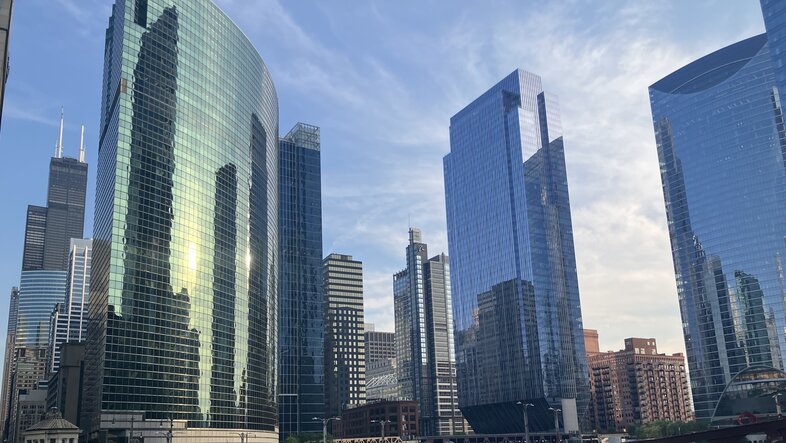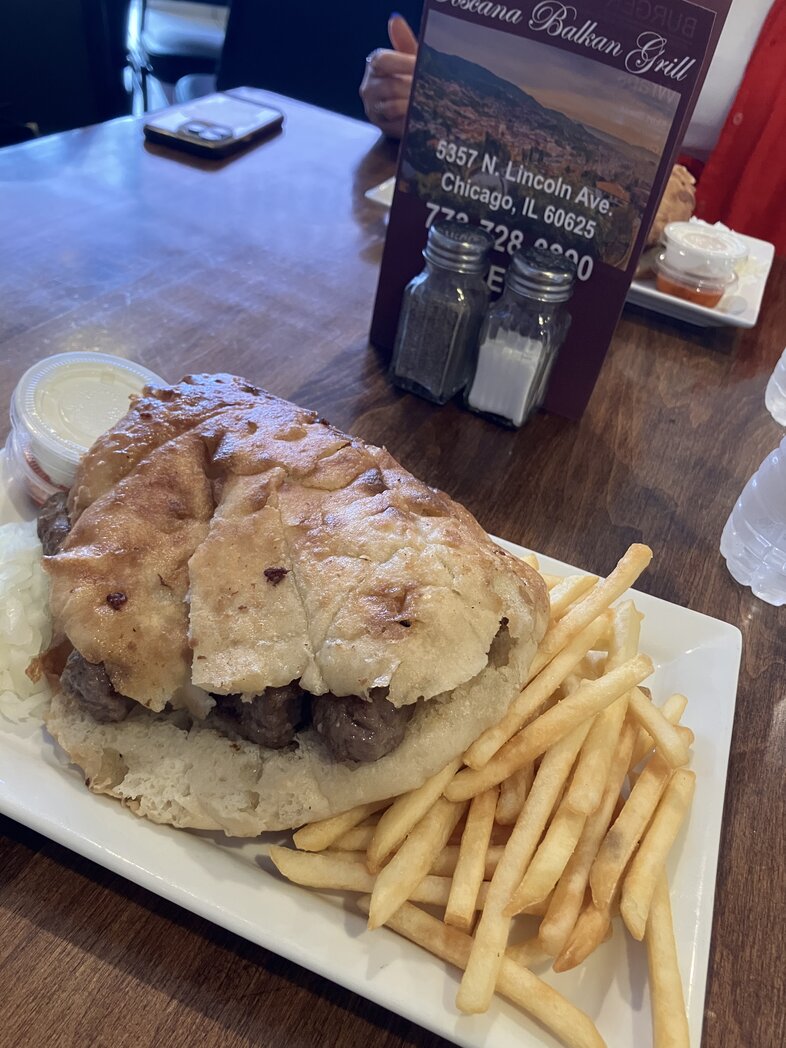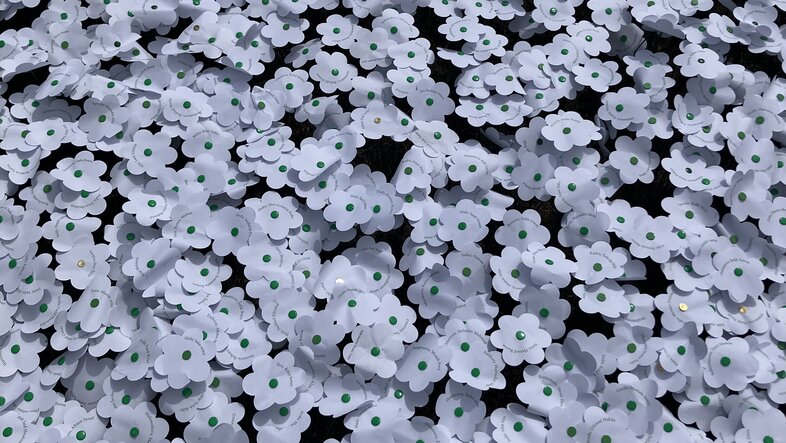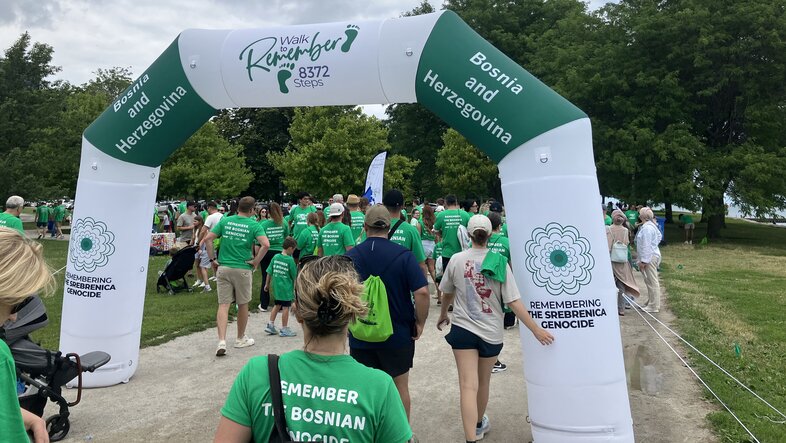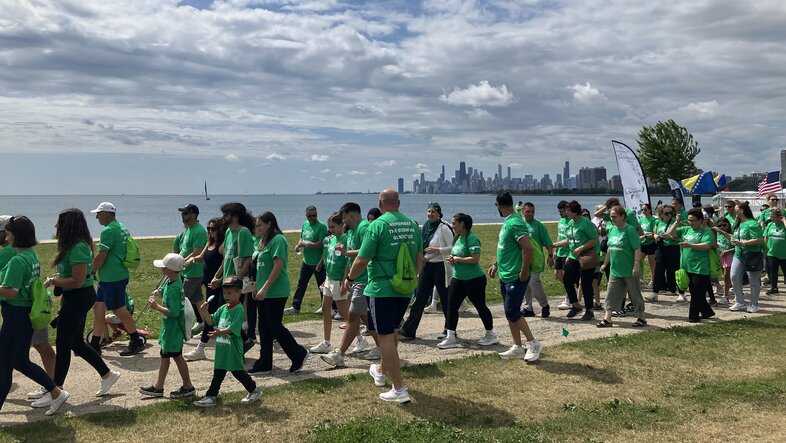From Vienna to Chicago: Identity, war and migration
Chicago is one of the largest cities in the US, world-famous for its striking architecture and characterised by great cultural diversity. With an active sports and cultural scene, numerous parks and the many beaches on Lake Michigan, the city has a lot to offer.
However, the quality of life varies. On the one hand, Chicago's crime rate remains high despite falling figures, while on the other hand many people are affected by poverty and precarious living and working conditions. Life here – as is the case throughout the US – is expensive, income inequality is much more pronounced than in Austria, and access to education, social security and healthcare is more unequal. This inequality is also reflected in everyday life on the streets.
Chicago: The Windy City on Lake Michigan
- Distance from Vienna: approx. 7,600 km
- Chicago, the third largest city in the US, is located on the shores of Lake Michigan in the state of Illinois. Founded in 1837, the city quickly developed into an important trade and transport hub, particularly thanks to its location on the Great Lakes and the expansion of the railroad network.
- Chicago was almost completely rebuilt after the devastating fire of 1871 – hence its nickname ‘The Second City’. Today, however, the name is mainly attributed to the fact that Chicago was long regarded as the second most important metropolis in the US after New York. The city's skyline is world-famous and is considered the birthplace of modern skyscraper architecture. The city's most famous sights include the Willis Tower (formerly the Sears Tower), Millennium Park, home to the iconic Cloud Gate sculpture and the Art Institute of Chicago, including pieces from Picasso's Blue Period and Van Gogh's Bedroom and other classics such as Grant Wood's "American Gothic" and Magritte's "On the Threshold of Liberty".
- A particularly large number of people of Irish descent live in Chicago and the surrounding area. Saint Patrick's Day is celebrated in a special way here – since 1961 the city authorities have dyed the Chicago River green every year to mark the Irish national holiday.
As a stronghold of the Democratic Party and a Sanctuary City – the term refers to a city whose authorities generally do not cooperate with the federal government in immigration law enforcement unless legally required – the Trump administration has repeatedly targeted Chicago, with the President's supporters most often found in the areas outside the city itself. Once you leave the confines of the city and head out into the countryside, you are suddenly confronted by countless Trump banners and other merchandise, often accompanied by white supremacist symbols. Within the city, such banners and symbols are a rare sight.
Chicago and St. Louis: Important centres of the Bosnian diaspora
In my research, I am investigating how the lives of people who fled the war in Bosnia-Herzegovina as children or adolescents have developed over the past three decades. Next December will mark the 30th anniversary of the signing of the Dayton Peace Agreement, which brought the violent conflict to an end. My family also comes from this country where over 100,000 people were killed between 1992 and 1995.
The aim of the project is to analyse how early experiences of war and forced migration shape people's lives, and in particular to examine the influence of different immigration settings. Many people fled to the US during and after the war, especially to St. Louis, Chicago and the New York metropolitan area. I chose Chicago for my project because in my previous research I had already investigated migration from the Former Yugoslavia to Vienna, a city with which Chicago can best be compared.
The 1.5 Generation
The project focuses on narrative interviews with people who experienced war and flight as children or young people around 30 years ago – the so-called 1.5 Generation. Before travelling to Chicago, and together with my colleagues Slađana Adamović and Jelena Jokić-Bornstein, I developed an interview guide designed to encourage the participants to share their life stories and experiences with us. We also began reaching out to potential interviewees and to “gatekeepers” – individuals who facilitate access to the field – in advance.
When I finally came to Chicago, I mainly conducted interviews and recruited further participants for the study. I familiarised myself intensively with the life of the Bosnian-Herzegovinian community through numerous conversations, but also on walks through the city, sometimes accompanied by my interview partners. I visited various organisations, took part in cultural events, but also simply went out to eat Ćevape or bought my bread at the local Bosnian bakery.
Walk to Remember
The first half of my stay was strongly characterised by the commemoration of the genocide in Srebrenica. Several events were organised, including film screenings and the "Walk to Remember", which has taken place for several years now, in which participants take 8,372 steps together to commemorate the 8,372 people murdered in July 1995. At the same time – in mid-July – numerous commemorative events were also held in Vienna. My colleagues Slađana Adamović and Jelena Jokić-Bornstein attended these events – they carried out the first phase of data collection in Vienna while I was in Chicago.
The Srebrenica genocide of 1995
The UN General Assembly declared 11 July the International Day of Reflection and Commemoration of the 1995 genocide in Srebrenica. Thirty years later, several thousand people marched peacefully along Vienna's Ringstrasse road to commemorate the victims of the genocide.
Life stories from Chicago versus Vienna
So, how does life in the Bosnian-Herzegovinian community in Chicago differ from that in Vienna? The first key difference is the geographical distance. While the Viennese can travel to Bosnia relatively easily, many in Chicago have hardly been there, or not at all, since they fled. This leads to a more abstract form of attachment to the former homeland.
Experiences also vary due to differing social conditions. In Austria, discussion of the war is more firmly anchored in public discourse, whereas in the US many people neither know where Bosnia is nor that there was a war there. At the same time, parents rarely talk openly about the past with their children. For many people who experienced war and flight as children or adolescents, their own origins remain a kind of ‘black box’. It is also particularly striking that the connection to the Former Yugoslavia hardly plays a role in Chicago and that encounters between people with Bosniak, Croatian or Serbian roots are far less common than in Vienna.
The different models of society in the US and Austria also play a role. US society is strongly characterised by individual achievement. Here, success is much more strongly associated with personal initiative, hard work and education than in Austria. This is coupled with a weak social safety net and healthcare that is difficult to access. Personal burdens are hardly considered. People who fail are quickly seen as either unwilling or too weak to succeed.
For children and adolescents who fled to Chicago, this meant high expectations combined with limited parental support, as parents usually had several jobs at the same time. Many took on responsibility for their family members early on, for example by helping deal with bureaucratic matters. There were similar challenges in Vienna, but here the better infrastructure and informal support systems took the pressure off the children and created different conditions for dealing with origin, education and advancement.
These are merely initial impressions. The detailed analysis will show how these differences have a concrete impact on the life stories in Vienna and Chicago.
The project is important because early experiences of war and flight shape a person's entire life – from education and career to health and social relationships. It shows how people form their long-term identity against the backdrop of these experiences of crisis in the field of tension between their origins and the new society. The comparison between Vienna and Chicago can be used to illustrate the extent to which social conditions influence people's paths in life. And, last but not least, the research provides findings that are also relevant for today's refugee movements and offer support and guidance to enable those fleeing war and migration to successfully integrate into the new society.
More about the current project by Ana Mijić
To what extent do early experiences of war and forced migration shape people's lives in the long term? The project ‘IRI.S - Creating Identity from War and Migration’ (FWF, 2025-2028) funded by the Austrian Science Fund, led by Ana Mijić (tenure-track professor for Qualitative Social Research) and carried out together with researchers Slađana Adamović and Jelena Jokić-Bornstein, investigates how people who fled the Bosnian war as children or adolescents have (re)built their lives and identities in the different social contexts of Vienna and Chicago. In the summer of 2025, Ana Mijić conducted her first interviews in Chicago and spent much time familiarising herself with the lives of the people who fled Bosnia 30 years ago. Find out more about the project here
- Ana Mijić's research group
- Department of Sociology of the Faculty of Social Sciences:
- Project website
- Reading recommendation: Navigating the Boundaries of Understanding by Ana Mijić
- Reading recommendation: Intersections of symbolic boundaries in the context of ex-Yugoslavian immigrant communities in Vienna by Ana Mijić

